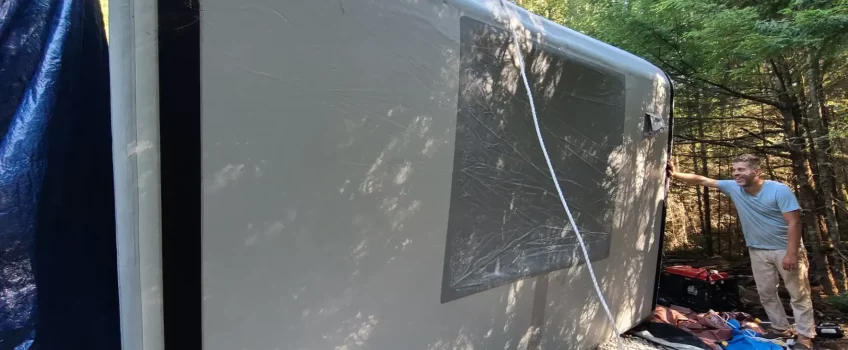
We all know how big the 3D printing industry has become with various applications across different sectors, but what if there is another construction technology that is faster, simpler and more affordable? There very well could be as this inventor reveals his inflatable concrete structures.
The construction technology this article refers to is called Inflatable Flexible Factory Formwork or IFFF for short. It’s the brainchild of American inventor Alex Bell, who commercialised it through his New York City-based startup, Automatic Construction.
Although 3D-printed buildings can be constructed quickly and easily, Bell’s new construction technology could be a game-changer. This technique involves inflating buildings and then pumping concrete into them. Let’s take a quick look at how it works and where it can be used.
Construction Technology Of The Future
The “building” process starts with a delivery of a rolled-up PVC (polyvinyl chloride) fabric “form” to the construction site. At first glance, this flexible form could be compared to a giant version of a rolled-up, deflated camping mattress.
Once the fabric form is in place, pumps are used to inflate its walls and roof with air. This makes it pop up and become a 3-dimensional shape of the finished structure. From there, they pump locally sourced wet concrete into the walls and roof which displaces the air inside.
Once the concrete sets, you get a solid shell of a concrete building fit for many purposes. To ensure the structure remains waterproof and airtight, the fabric form is not removed and now serves as an energy-saving barrier. At this point, features like doors, windows, interior drywall and exterior siding can be added.
How Long Does It Take To Build An Inflatable Concrete Structure?
In his prototype structures, Bell added rebar reinforcements onsite. However, looking ahead, he hopes to have the rebar, tension cables and other reinforcing elements preinstalled within the forms.
According to Bell, it takes 7 – 10 minutes to inflate their 100 square foot [9.3 sq m] and 200 square foot [18.6 sq m] prototypes with air. From there, it takes 1.5 hours to pump concrete into the structure.
“With labour, these prototype inflatable concrete structures only cost $20 per square foot which is significantly cheaper than anything else,” says Bell.
With one project underway and two more pending, Bell’s team is now selling houses directly to consumers in New York’s Hudson Valley. He says that they have also signed one contract with a “large commercial contractor” for the delivery of a structure, as well as another contract to supply a box culvert to an infrastructure developer.
Applications Of Bell’s IFFF Construction Technology
In addition to homes, other applications for the IFFF construction technology currently underway include pool foundations, rapid-deploy military structures, and one day perhaps even skyscrapers. There’s even the possibility of building Mars expedition structures for use by astronauts.
The possibilities seem endless with this type of construction technology, largely thanks to Bell’s creative thinking and continuous efforts. His last invention was a quirky front-wheel-drive bike with under-the-seat steering which is called the Bellcycle. It’s not as straightforward as you might think as it can take about 10 to 15 minutes to learn how to ride.
Other Construction Technology Innovations
Inflatable concrete buildings may sound like a new concept but there are other projects involving interesting construction techniques. One such innovation is called “concrete on a roll”, the creation of engineers Peter Brewin and Will Crawford when they were still students at the Royal College of Art in London.
While experimenting with Modroc (a plaster-impregnated bandage to help mend broken bones), the idea of making inflatable shelters was born. It could be constructed very quickly for use in different applications, especially as emergency shelters for the military or disaster relief.
The final product would be known as Concrete Canvas, a fabric that hardens when sprayed with water. Once dried, it creates a waterproof and fireproof concrete layer. This concrete is sold in large rolls which can be shaped onto just about any surface, slope or existing concrete. Read the full story here for a quick introduction to this construction technology.
Conclusion
3D printing has been one of the fastest-growing trends in recent years with much success across the globe. With the current economic climate, Bell’s new IFFF construction technology could gain even more traction, especially considering the low cost, fast setup and sustainability aspect.
For more articles on 3D printed homes, engineering marvels, manufacturing and construction technology, follow our blog and join the conversation on social media using the hashtag, #PRVtech.


 Mail:
Mail: 



